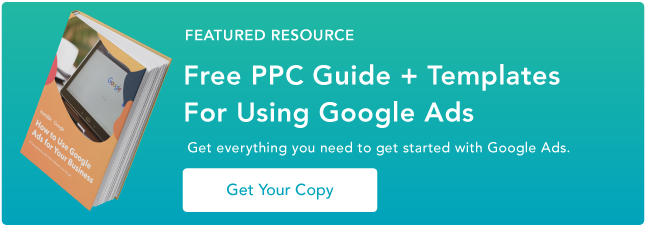Why Use an AdSense Alternative?
There are a handful of disadvantages to Google’s platform that make it unsuitable for certain blog sites. Here are some common and valid reasons to pick a competing ad network over AdSense:
Eligibility Requirements
Many networks, including AdSense, require that applicants hit certain metrics on their website before they can be a partner. If Google won’t authorize your blog for an AdSense account, you’ll need a network with more relaxed approval requirements to get started.
Because of the platform’s rigorous click fraud control, you might also have had your AdSense account disabled. For example, you accidentally placed an ad on a page you shouldn’t have, or you unintentionally clicked one of your own ads. It’s easy to violate the terms of service if you’re not paying attention, and you might need a more forgiving alternative.
Revenue Share
Most ad networks use an automated system to place advertisements in designated areas on your website. When users engage with these ads — for example, by viewing them, clicking them, and/or making a purchase through the ad — you receive a share of the commission, and the rest goes to the network.
With Google AdSense, publishers receive 68% of the revenue generated by ads on their website. This is a competitive rate, but some alternative networks offer an even greater share. You’ll need a top-notch website with steady and high traffic to qualify, but it’s worth it if you make the cut.
Ad Customization
Some ad networks let you tailor the look of your ads to your website’s theme to help them fit in more naturally with your original content. The level of customization varies by service, but many let you adjust the color and sizing of a unit, which is more flexible than AdSense allows.
Minimum Payout
A network’s minimum payout is the minimum amount of earnings you need before you can receive a payment. AdSense’s minimum payout is $100, which is higher compared to some alternatives. If your website is smaller or less established, it could take longer than you’d prefer to reach $100 in earnings. You might be better off partnering with a service that offers a lower minimum payout.
Tailoring for Your Blog
Large ad networks like Google AdSense are built to serve any type of content-heavy site, from blogs to news sites to video publishers and everything in between. If you’re looking for an ad provider that works directly with you and can build a custom-fit solution for your specific blog, it makes sense to seek out an alternative to AdSense.
Additional Revenue Sources
Instead of replacing AdSense, you might want a companion network that runs on your site alongside AdSense, in order to provide an additional source of revenue. There’s nothing wrong with that, as long as you stay within the AdSense terms of service.
If any of these cases apply to you, there are many worthy alternatives that you can try. Let’s break down the best ones.
1. Media.net: Best for Established Bloggers
Media.net is a leader in contextual advertising. The service is run by Bing and Yahoo and it is widely considered the go-to AdSense alternative for publishers and advertisers. Media.net offers multiple types of display ads and native ads for desktop and mobile, and you can expect to earn around the same from these ads as you would with AdSense.
As with all AdSense alternatives, pay attention to Media.net’s approval requirements. To be accepted, your blog must offer high-quality content and adhere to a clean, professional design. Your traffic source also matters: Media.net requires that the majority of your visitors are located in the United States, United Kingdom, and Canada.
If you’re looking for a service comparable to AdSense in features, quality, and payout rate, Media.net is a great starting point. The minimum payout is $100 via PayPal, and payouts occur monthly.
Best for: Publishers looking for the most comparable service to Google AdSense in payouts and overall experience.
-Dec-06-2021-08-41-31-82-PM.jpeg?width=650&name=google%20adsense%20alternatives%20(update)-Dec-06-2021-08-41-31-82-PM.jpeg)
2. PropellerAds: Best for Popunders
PropellerAds is a fast-growing platform that provides monetization opportunities for both new and old blog sites. PropellerAds is known for popunder ads, which load behind the current browser window and appear when this window is closed.
If popunders seem too aggressive for your blog, PropellerAds provides other targeted and non-targeted ad options for desktops, including native ads, banners, and video ads. PropellerAds also serves mobile sites and applications and even offers a push notification ad type for these channels.
PropellerAds is accessible to established sites, but is great for newer blogs too: There’s no minimum requirement for site traffic, your account is activated instantly after creation, and the payout threshold is just $5 through PayPal. These payouts occur monthly.
Best for: Both new and established websites that want to add popunder ads and other non-targeted ads.
-Dec-06-2021-08-41-32-57-PM.jpeg?width=650&name=google%20adsense%20alternatives%20(update)-Dec-06-2021-08-41-32-57-PM.jpeg)
3. Publift: Best for Mid to Large-Sized Publishers
Publift is the brainchild of Colm Dolan and Tobin Page, two ex-Googlers who between them have over a decade of experience working in the ad tech space. This pedigree allowed them to understand how publishers were being hamstrung because they lacked three essential tools to compete with enterprise-level players in the publishing industry—knowledge, resources, and world-class support.
Publift was founded in 2015 with a mission to equip publishers with just these. Its proprietary ad tech solution, Fuse, integrates easily and seamlessly with websites and apps, and helps publishers gain access to premium advertising partners. This levels the playing field, allowing mid to large-sized publishers to compete with enterprise-level players and media corporations when it comes to ad revenue.
With a revenue share of 80-20 in favor of the publisher, meaning publishers get to keep 80% of their ad revenue, Publift offers one of the best compensation models in the industry.
Its customer base of over 700 publishers across 60 countries vouch for Publift’s cutting-edge tech and its world-class services. With an average of 55% increase in revenue compared to other platforms, Pubflit’s clients are a satisfied lot.
Publift is a Google Certified Publishing Partner and has been recognized by Deloitte as one of Australia’s fastest-growing tech startups in 2019. To be eligible to work with Publift, publishers must have a minimum monthly revenue of $2,000 or 500,000 monthly page views, along with good-quality content on their website. Publift has a minimum payout requirement of $100 a month and pays monthly via wire transfer.
Best for: Mid and large-sized publishers looking to scale up to the next level and compete with enterprise-level publishers and large media corporations.

4. Monumetric: Best for Mid-Sized Blogs
Monumetric (formerly The Blogger Network) is a blogger-centric advertising network that pays special attention to its content creators and ensures the ads shown on your site are high-quality and appropriate for your readers. They do this in part by talking directly to their customers, and are available for support when you need it.
Monumetric runs a cost-per-impression model instead of a cost-per-click model, meaning you’re paid when visitors see ads on your pages, not when they click them. While earnings from impressions are lower than clicks, Monumetric makes up for this with highly-targeted ads.
Monumetric is also notable for its four monetization programs, which are tiered by monthly pageviews — these increase your level of support as your blog scales. While there is a minimum of 10,000 monthly page views to be approved, this threshold is lower than some other networks on this list, and can be achieved by mid-sized blogs. Also, note that blogs under 80,000 monthly pageviews pay a $99 fee upfront for setup.
Monumetric’s minimum payout is $10 via PayPal or direct deposit.
Best for: Large and medium-sized bloggers who want high-quality, targeted, impression-based ads.
-1.jpeg?width=650&name=google%20adsense%20alternatives%20(update)-1.jpeg)
5. Revcontent: Best for High-Traffic Media Sites
Revcontent is a leader in native ads, which are designed to match the look and feel of your blog content. These ads are highly targeted to help them blend in on your site’s pages. Revcontent also offers ads in other formats like display, mobile, and video.
Revcontent has a reputation for exceptional clients on both the publisher and advertiser side. It partners with publishers that are likely to generate a lot of hits on ads, which attracts advertisers who are willing to pay higher commissions.
The catch is that Revcontent is selective, even more so than Google AdSense. To apply successfully, your site needs to report at least 50,000 monthly visitors and generate valuable content regularly. There’s a chance of rejection, but it’s worth a shot for Revcontent’s promise of higher engagement rates. Publishers are paid monthly, and the minimum payout is $50.
Best for: Exceptional content-publishing websites with high traffic, looking for targeted native ads.
-3.jpeg?width=650&name=google%20adsense%20alternatives%20(update)-3.jpeg)
6. Adversal: Best for Self-Service Advertisers
Adversal is a self-serve advertising service, which means that publishers purchase and publish ads with the platform without human assistance. With Adversal and other self-service platforms, your ad content and placement is completely up to you, great for those seeking more control over advertising on their websites.
With its easy-to-use interface, Adversal aims to streamline the setup process and get your ads running quickly. You can control your campaigns with just a few clicks, and the platform supports display ads, video ads, and native ads so you can choose the most fitting options.
To be eligible for Adversal, your site must garner at least 50,000 pageviews per month, have its own domain name, and not be restricted by a login. The minimum payout is $20, issued monthly. You can receive payments via wire transfer, PayPal, ACH, or check.
Best for: High-traffic publishers who want to choose their own ads and ad placement.

7. AdThrive: Best for Large Blogs
AdThrive is another well-received ad network that takes good care of its bloggers. This cost-per-impression network works closely with both publishers and its advertisers to ensure your blogging site is only showing ads for exceptional products by exceptional businesses. The AdThrive team works with you on a monetization strategy and will help you place your ads in the most optimal spots.
But, perhaps the best reason to join AdThrive is its 75% payout directly to publishers, as well as its payment guarantee — you’ll always be paid in full, on time, even if AdThrive doesn’t receive payment from its advertisers on time.
This all means that AdThrive isn’t for beginner bloggers. It requires at least 100,000 monthly pageviews, the majority of which must be based in the U.S. However, established blogs should consider this service. The minimum payout is $25 for PayPal and direct deposit.
Best for: Established publishers that want to work closely with their ad network to build a monetization strategy and receive a high payout.
-4.jpeg?width=650&name=google%20adsense%20alternatives%20(update)-4.jpeg)
8. Mediavine: Best for Lifestyle Bloggers
With its 75% revenue share to bloggers and highly-tailored ad-placements, Mediavine is comparable to AdThrive, but only requires half the amount of monthly page views (50,000). This ad network pulls from a large pool of lifestyle advertisers, meaning this service is oriented toward lifestyle bloggers — if you write long-form content within this niche, definitely consider applying.
Mediavine also brings empathy to your partnership, which is surprisingly hard to come by in this space. It was started by bloggers who understand the importance of fast-loading, high-quality ads, as well as transparency: The organization will answer any questions you have about ads on your website.
Mediavine’s minimum payout is $25 for PayPal and direct deposit (or $200 for international direct deposit).
Best for: Lifestyle bloggers with high monthly traffic.
-Dec-06-2021-08-41-32-35-PM.jpeg?width=650&name=google%20adsense%20alternatives%20(update)-Dec-06-2021-08-41-32-35-PM.jpeg)
9. Playwire: Best for High-Traffic Blogs and Enterprises
Playwire’s Revenue Amplification Managed by Professionals (RAMP) Platform brings the best of ad tech into a single platform, and makes it smarter. The RAMP Platform is a great fit for blog publishers who’ve surpassed the 500,000 page views per month mark and are looking for a more comprehensive ad monetization solution.
RAMP provides access to a comprehensive set of demand sources on the market, while layering on predictive analytics to drive higher payouts. Ultimately, this helps high-traffic blogs drive ads through engaging and high impact ad units.
Finally, Playwire's global direct sales team has relationships with the world’s foremost brand advertisers, unlocking lucrative direct deals.
The minimum payout is $100 through PayPal or $500 through wire transfers, issued every 60 days.
Best for: Publishers who receive high levels of traffic and are looking to leverage a comprehensive monetization platform.

10. InfoLinks: Best for In-Text Ads
InfoLinks provides a viable alternative to display ads — its specialty is in-text advertising placement. InfoLinks searches for keywords in the body of your blog text, and automatically associates ads with relevant text snippets. When a visitor hovers over this special text, a relevant ad appears next to it. In-text ads work well on blogs since more words on a page mean more opportunities for relevant ads.
InfoLinks can monetize any blog, old or new. It requires no setup fee, and there are no minimum requirements for page views. Once set up, you can quickly implement in-text ads (as well as targeted display ads, if you’d prefer) and gain insights from the reporting dashboard.
InfoLinks pays every 45 days via PayPal (the minimum payout is $50), Western Union, and Payoneer.
Best for: Bloggers and publishers looking for an in-text advertising solution that’s accessible to new websites.
-Dec-06-2021-08-41-33-56-PM.jpeg?width=650&name=google%20adsense%20alternatives%20(update)-Dec-06-2021-08-41-33-56-PM.jpeg)
11. Bidvertiser: Best for Bidding Campaigns
Bidvertiser operates on a bidding campaign system: Rather than placing ads automatically, Bidvertiser sells display ad space on your website to whichever advertiser pays most.
There are both benefits and downsides to a system like this. If your site brings in enough traffic, advertisers will try to outbid each other for space, and you might end up earning much more from the auction than you would from AdSense. But, if advertisers are unaware of your site, you might not receive any bids at all.
Before trying Bidvertiser, think about which of these categories your blog falls into. If the bidding system works for you, you’ll benefit from Bidvertiser’s easy ad customization tool, zero approval restrictions, and payment for both clicks and conversions. Bidvertiser users are paid monthly, and the minimum payout is $10 through PayPal.
Best for: Websites that prefer a bidding campaign system to a more standard ad placement platform.
-Dec-06-2021-08-41-31-62-PM.jpeg?width=650&name=google%20adsense%20alternatives%20(update)-Dec-06-2021-08-41-31-62-PM.jpeg)
12. SHE Media: Best for Female-Focused Content
SHE Media is a digital media company that produces content for and by women — it’s known primarily for its blogs SheKnows, Blogher, and StyleCaster, which combined garner tens of millions of monthly views. SHE Media also operates a partner network that matches female-focused advertisers with female-focused bloggers and content creators.
If your blog targets an audience primarily of women, consider SHE Media for monetization. If approved, you’ll share the same advertisers as its acclaimed blog properties, and associate with an organization that seeks to amplify female voices. You’ll also be given high-quality ads from vetted advertisers that promote products without pulling readers out of their experience.
To qualify, your website should bring in at least 20,000 views per month (though this is not a strict requirement). Your traffic must also be at least 80% U.S.-based and at least 70% female — you’ll need to prove this with your metrics. The SHE Media partner network pays out every month through direct deposit, or PayPal for bloggers outside the United States.
Best for: Female-focused bloggers and content creators.
-2.jpeg?width=650&name=google%20adsense%20alternatives%20(update)-2.jpeg)
13. Taboola: Best for Enterprises
Taboola is a major advertising company that has worked with large media brands and earned a reputation for its high quality of advertisements. It specializes in native ads from sponsored websites that are targeted based on Taboola’s advanced tracking methods.
Taboola is also noted for its range of features that go beyond simple ad placements. The service lets you display advertisements with highly customizable formats, embed videos, manage personalization methods, and filter ads shown by keyword.
With a minimum traffic requirement of 500,000 pageviews per month, Taboola’s services are reserved for enterprises, not small bloggers. The minimum payout is $50 through Payoneer.
Best for: Enterprises with a diverse audience that would respond well to personalized, targeted ads.
-Dec-06-2021-08-41-33-22-PM.jpeg?width=650&name=google%20adsense%20alternatives%20(update)-Dec-06-2021-08-41-33-22-PM.jpeg)
14. ylliX: Best for New Publishers
The biggest draw of ad network ylliX is its accessibility to new publishers: There are no traffic requirements to join, daily payments, and the minimum payout is just $1. Thanks to its few requirements, ylliX will also approve your website quickly after signing up.
This self-serve platform offers multiple types of mobile and desktop ads — including banners, sliders, anchor, in-app, pop-ups, and push notifications — and allows you to run campaigns based on ad impressions, clicks, and actions.
ylliX also has a generous referral program: You get paid up to $100 for each new user you refer to the service.
Best for: Publishers (including new publishers) in need of a self-service platform with flexible ad types and campaign types.
-Dec-06-2021-08-41-34-13-PM.jpeg?width=650&name=google%20adsense%20alternatives%20(update)-Dec-06-2021-08-41-34-13-PM.jpeg)
15. RevenueHits: Best for Pay-Per-Action Campaigns
A relative newcomer to the industry, RevenueHits is gaining traction as a reliable monetization platform. RevenueHits highlights its advanced ad optimization tool, which learns from your ad performance and shows you where to best place ads on your site.
There’s no minimum traffic restriction to get started with RevenueHits. However, it’s important to note that ads through RevenueHits are performance-based, not cost-per-click. This means that you won’t earn money from clicks alone. To generate revenue for your blog, visitors need to click your ad, then complete specific actions on the advertised website. These actions vary by advertiser but are always less attainable than a simple click. Common examples include making a purchase or subscribing to a service on the website.
RevenueHits pays on a 30-day basis via PayPal and Payoneer. The minimum payout is $20.
Best for: New publishers who want an alternative to click-based and impression-based campaigns.

16. Adcash: Best for Pay-Per-Action Campaigns
Adcash serves more than 200 million active users and 850,000 app installs each month. It supports nearly all ad formats, from standard display ads to more premium units like popunders and instream video ads. It’s easy to place and customize any ad unit, and you can view real-time reports of your ad performance via the admin panel.
Like RevenueHits, Adcash also follows a pay-per-action model. It offers payouts through PayPal, Payoneer, Skrill, and WebMoney. As an added perk, the $25 minimum payout is fairly low.
Best for: New publishers who favor a pay-per-action model.
-Dec-06-2021-08-41-33-03-PM.jpeg?width=650&name=google%20adsense%20alternatives%20(update)-Dec-06-2021-08-41-33-03-PM.jpeg)
17. BuySellAds: Best for Established Websites
If your blog generates consistently high traffic, consider BuySellAds, a self-serve ad portal for publishers. BuySellAds is highly exclusive — you’ll need at least 100,000 page views per month to join, and it only accepts English-language websites with excellent content and design.
If you can reach this high bar, you’ll enjoy a 75% commission per click. This is very competitive for the industry and significantly higher than Google’s commission rate of 62% per click. The minimum payout is just $20 with PayPal.
Ad formats include banners, text ads, native ads, RSS feed ads, email ads, and content sponsorships. Unlike other solutions, BuySellAds does not display automated or targeted ads. Instead, publishers sell the ad space available on their site to advertisers via a marketplace.
Best for: Popular, well-designed websites that generate enough monthly traffic for high-quality ads from vetted advertisers.

18. Skimlinks: Best for Affiliate Marketing
Skimlinks specializes in affiliate marketing, making it unique from other options on our list. It works by scanning text on your blog for links to other sites. If a link leads to one of its advertising partners, Skimlinks turns it into an affiliate link and you’ll receive 75% commission when a visitor clicks on it. You also earn additional revenue when users purchase products through your affiliate links.
Skimlinks is ideal for bloggers who want to monetize their text content without (or in addition to) display ads. It also works well for product reviews, which are more likely to mention brands by name. Skimlinks offers a low minimum payout of $10. However, it only sends payments every 90 days.
Best for: Affiliate marketers who want their affiliate links placed automatically.
-Dec-06-2021-08-41-33-90-PM.jpeg?width=650&name=google%20adsense%20alternatives%20(update)-Dec-06-2021-08-41-33-90-PM.jpeg)
19. Amazon Native Shopping Ads: Best for Amazon Affiliate Marketing
You’ve heard of Amazon, but did you know about its display ads program? Amazon Native Shopping Ads, a division of the Amazon Associates program, allows you to place native Amazon product listings on your blog pages. These ads are targeted based on the surrounding page content.
When a visitor clicks one of these ads and then buys any product on Amazon, you’ll receive a commission from the purchase. Thanks to Amazon’s unparalleled reputation in e-commerce, your visitors are more likely to make a purchase this way than through competitors.
Amazon sends payments 60 days after the end of each month, and the minimum payout is low at $10 via direct deposit.
Best for: Publishers looking to partner with Amazon and become an Amazon Associate.
-Dec-06-2021-08-41-32-01-PM.jpeg?width=650&name=google%20adsense%20alternatives%20(update)-Dec-06-2021-08-41-32-01-PM.jpeg)
20. Sovrn //Commerce: Best for New Websites
Sovrn //Commerce (formerly VigLink) is an AdSense alternative for beginner publishers. This option provides blogs with a variety of display ads, video ads, and affiliate links to insert on their pages, and automates relevant ad selection based on your content.
Sovrn //Commerce is also big on insights — you’ll have a reporting portal in which you can track your ads’ performance and address which of your pages get the most ad engagement. You’re also allowed to choose between a cost-per-impression or a cost-per-click model for your monetization strategy.
Finally, there are no barriers to entry with Sovrn //Commerce — just sign up. The minimum payout is $10 through PayPal and $50 through direct deposit.
Best for: Beginner publishers running cost-per-impression or cost-per-click campaigns.
.jpeg?width=650&name=google%20adsense%20alternatives%20(update).jpeg)
21. PopCash: Best for Popunders
Similar to PropellerAds, PopCash is an advertising network that specializes in popunder ads. A popular service, PopCash is a more accessible service with minimal registration requirements and fast approval. After signing up, you’ll join a network with over 50,000 publishers and hundreds of millions of monthly viewers.
Again, popunder ads aren’t everyone’s cup of tea. But if you don’t mind this type of advertisement, it’s easy to get started with them. Your revenue share is also excellent at 80%.
Plus, you’ll get analytics to guide how you target your ads. The minimum payout is $10 through PayPal, Paxum, Skrill, and wire transfer. As a bonus, you can receive payments daily.
Best for: New publishers interested in popunder ads.

22. Setupad: Best for Bidding Campaigns
If your website's monthly visits are at 100,000 or more, consider partnering with Setupad. This platform provides a selection of ad formats — like rich media ads (interstitial, sticky, expandable, native, and amp) as well as video ads and standard ad formats like display ads.
Setupad provides an easy-to-use Google Chrome extension where users can report unwanted ads and review real-time data like winning SSP, CPM price, and average eCPM up to the last minute.
Setupad uses header bidding technology to connect publishers with more than 15 buyers — including Google. Increased competition pushes buyers to increase their prices thus maximizing ad revenue. With Setupad, you can increase ad revenue by a minimum of 30% if you previously used Google Adsense. Publishers receive their first payment after 60 days and then every 30 days if the minimum threshold of €100 is reached. Otherwise, Setupad adds these earnings to the next month.
Best for: Popular websites that want to use a bidding model to maximize ad revenue.
.png?width=650&name=google%20adsense%20alternatives%20(update).png)
23. AdRecover: Best for Ad Blockers
Ad blocking software prevents online advertisements like display ads from displaying in users’ browsers, and is a major obstacle to online advertisers and publishers that rely on ad revenue to sustain their websites.
AdRecover is one solution to this problem: It partners with ad-blocking software and works to present ads that comply with user experience standards. AdRecover ensures your advertisements are non-disruptive in order to drive clicks from AdBlock, AdBlockPlus, and Crystal Adblock users.
To be accepted, your website must receive at least 10,000 ad-blocked pageviews per month. The minimum payout is $50.
Best for: Popular websites experiencing decreasing impressions, clicks, and/or actions due to ad-blocking software.

24. PopAds: Best for Best for Popunders
Closing out our list is PopAds, which also focuses on popunder ads and is well-respected in its niche. It also claims to be the best-paying ad network among popunder ad providers.
PopAds highlights its fast and fair payments, useful control over popunder ad features, frequency, and targeting. The bar to entry is also low, only requiring 1,000 monthly visitors to use the service.
PopAds offers daily payments with a minimum payout of $5 via PayPal and AlertPay. Wire transfers are also allowed with a minimum payout of $500.
Best for: Publishers with relatively low monthly traffic who want to deploy popunder ads.
-Dec-06-2021-08-41-32-81-PM.jpeg?width=650&name=google%20adsense%20alternatives%20(update)-Dec-06-2021-08-41-32-81-PM.jpeg)
Ads Without AdSense
A high-quality AdSense alternative will help you secure an additional revenue stream that can motivate you to produce more blog content and help cover the cost of running your website.
When making your choice of ad network, don’t settle for the first one you try. Be sure to test at least a few different options over a set period of time, then determine which ones generate the most passive income for you without disrupting the user experience. It’s okay to do things a bit differently — you don't have to go with Google.
Editor's note: This post was originally published in October 2020 and has been updated for comprehensiveness.
Ecommerce

.jpeg)









